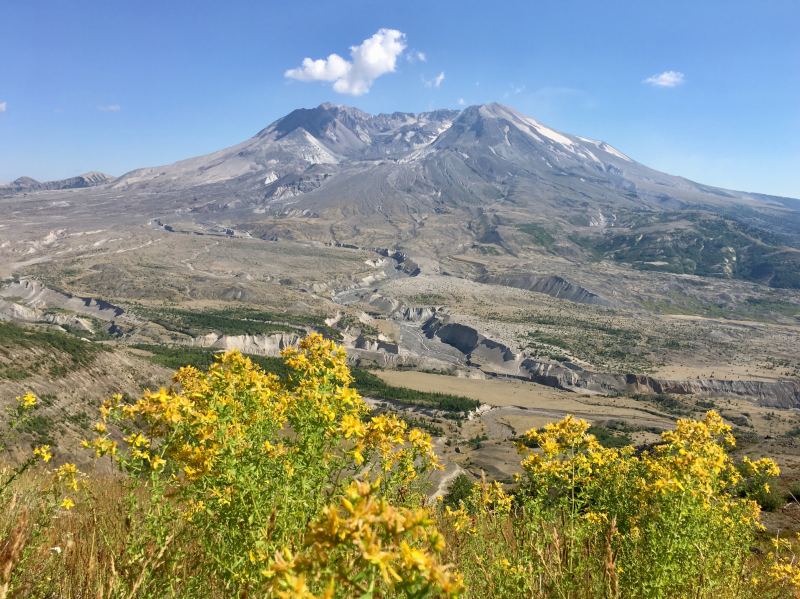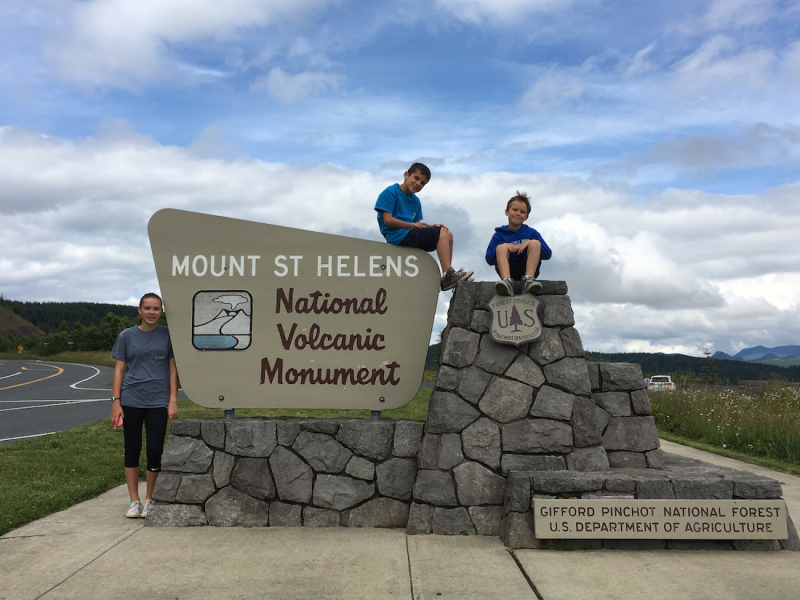Mount St. Helens National Volcanic Monument
When Mount St. Helens explosively erupted on May 18th, 1980, it reduced the peak by 1,300 feet and leveled much of the surrounding area. A cloud of ash rose 13 miles into the air. Almost 150 square miles of forest were destroyed, houses were overwhelmed by masses of water and mud, and 57 people lost their lives. The landscape of Mount St. Helens today is still rebounding from the massive event. Today, visitors are encouraged to learn more about the geological processes underway at the Mount St. Helens National Volcanic Monument.
One of the most popular places to observe and learn about the mountain is the Johnston Ridge Observatory at the end of the Spirit Lake Highway (SR 504). This unique visitor center offers further insight into the eruptive history of the mountain and is a launching point for many of Mount St. Helens best hiking trails. A bucket-list adventure at Mount St. Helens is hiking/climbing all the way up to the remaining crater. This challenging endeavor is usually done from the Climber's Bivouac trailhead on the south side of the mountain. Permits are required for any summit attempt on Mount St. Helens.
Official site: www.fs.usda.gov
Address: 42218 NE Yale Bridge Rd, Amboy, WA 98601
Phone: (360) 449-7800
Entrance fee: Ages 6 and younger: Free. Ages 7 to 17: $2.50. Ages 18 and older: $5
Google rating: 5.0/5.0












